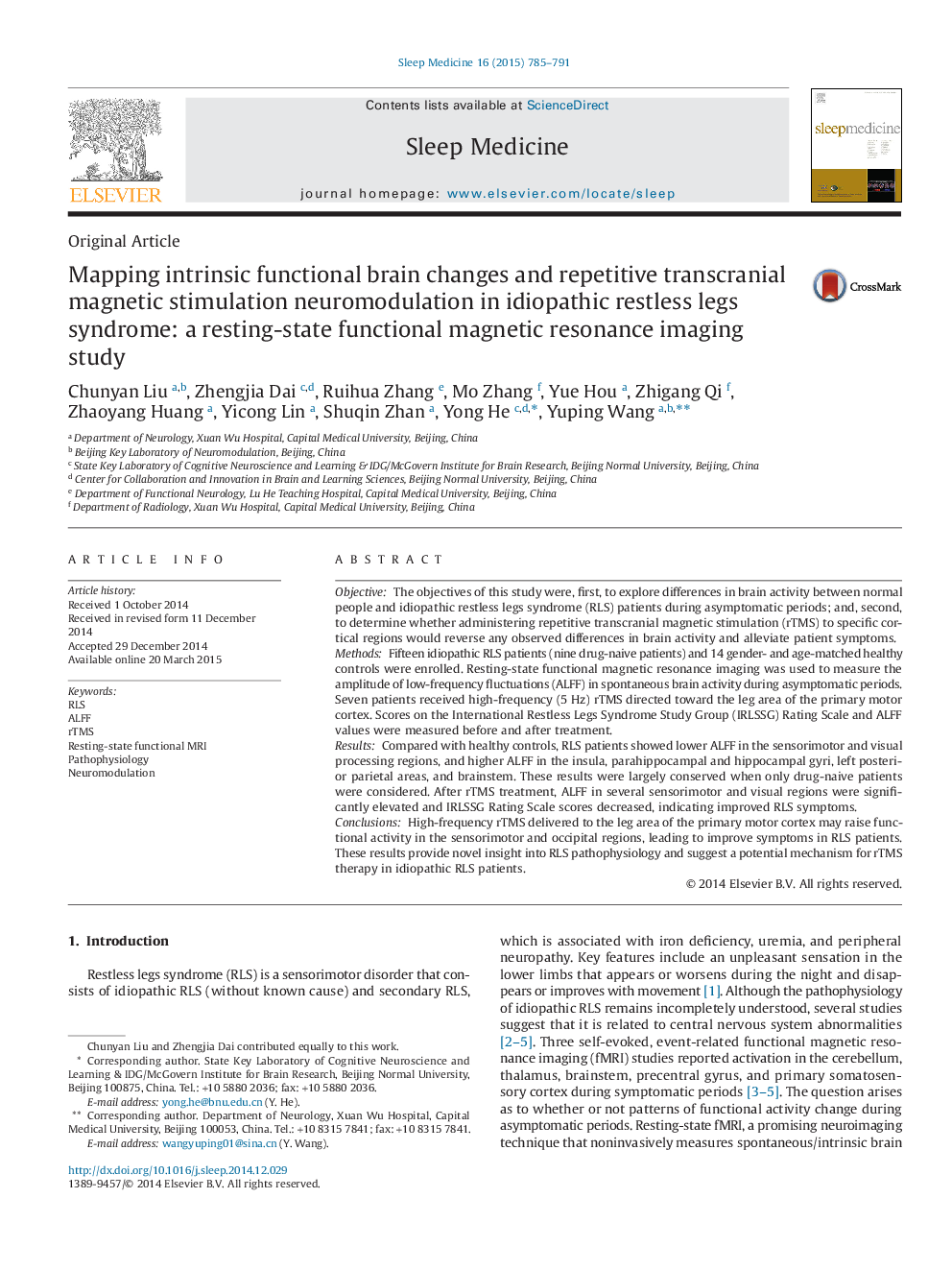| کد مقاله | کد نشریه | سال انتشار | مقاله انگلیسی | نسخه تمام متن |
|---|---|---|---|---|
| 6060729 | 1200236 | 2015 | 7 صفحه PDF | دانلود رایگان |
- We used resting fMRI to study intrinsic brain activity in RLS patients.
- We assessed brain activity changes in RLS patients after rTMS treatment.
- RLS patients had lower ALFF values in sensorimotor and visual regions.
- After rTMS treatment, low ALFF in RLS patients was partially reversed.
ObjectiveThe objectives of this study were, first, to explore differences in brain activity between normal people and idiopathic restless legs syndrome (RLS) patients during asymptomatic periods; and, second, to determine whether administering repetitive transcranial magnetic stimulation (rTMS) to specific cortical regions would reverse any observed differences in brain activity and alleviate patient symptoms.MethodsFifteen idiopathic RLS patients (nine drug-naive patients) and 14 gender- and age-matched healthy controls were enrolled. Resting-state functional magnetic resonance imaging was used to measure the amplitude of low-frequency fluctuations (ALFF) in spontaneous brain activity during asymptomatic periods. Seven patients received high-frequency (5 Hz) rTMS directed toward the leg area of the primary motor cortex. Scores on the International Restless Legs Syndrome Study Group (IRLSSG) Rating Scale and ALFF values were measured before and after treatment.ResultsCompared with healthy controls, RLS patients showed lower ALFF in the sensorimotor and visual processing regions, and higher ALFF in the insula, parahippocampal and hippocampal gyri, left posterior parietal areas, and brainstem. These results were largely conserved when only drug-naive patients were considered. After rTMS treatment, ALFF in several sensorimotor and visual regions were significantly elevated and IRLSSG Rating Scale scores decreased, indicating improved RLS symptoms.ConclusionsHigh-frequency rTMS delivered to the leg area of the primary motor cortex may raise functional activity in the sensorimotor and occipital regions, leading to improve symptoms in RLS patients. These results provide novel insight into RLS pathophysiology and suggest a potential mechanism for rTMS therapy in idiopathic RLS patients.
Journal: Sleep Medicine - Volume 16, Issue 6, June 2015, Pages 785-791
